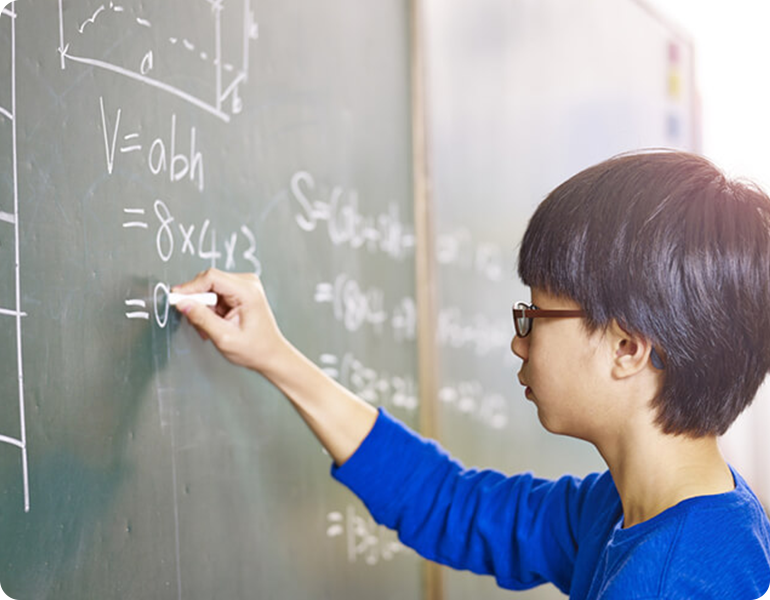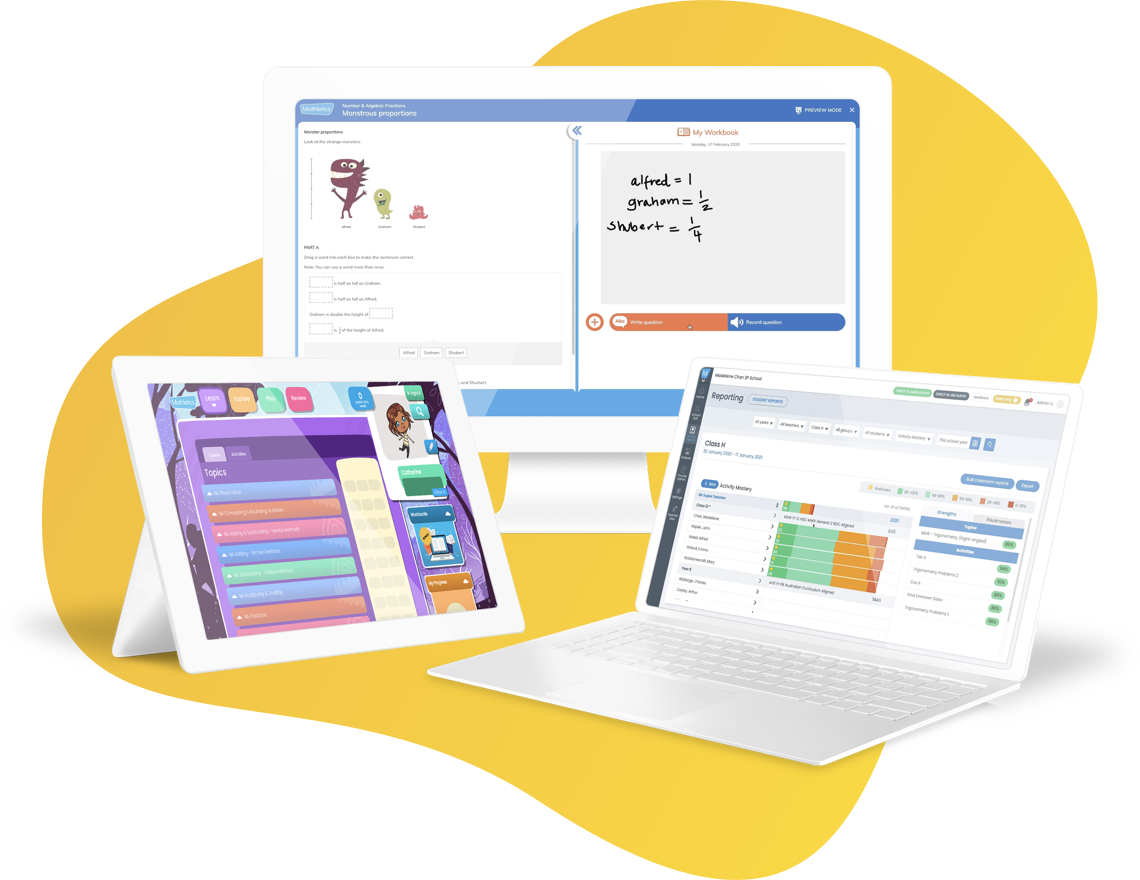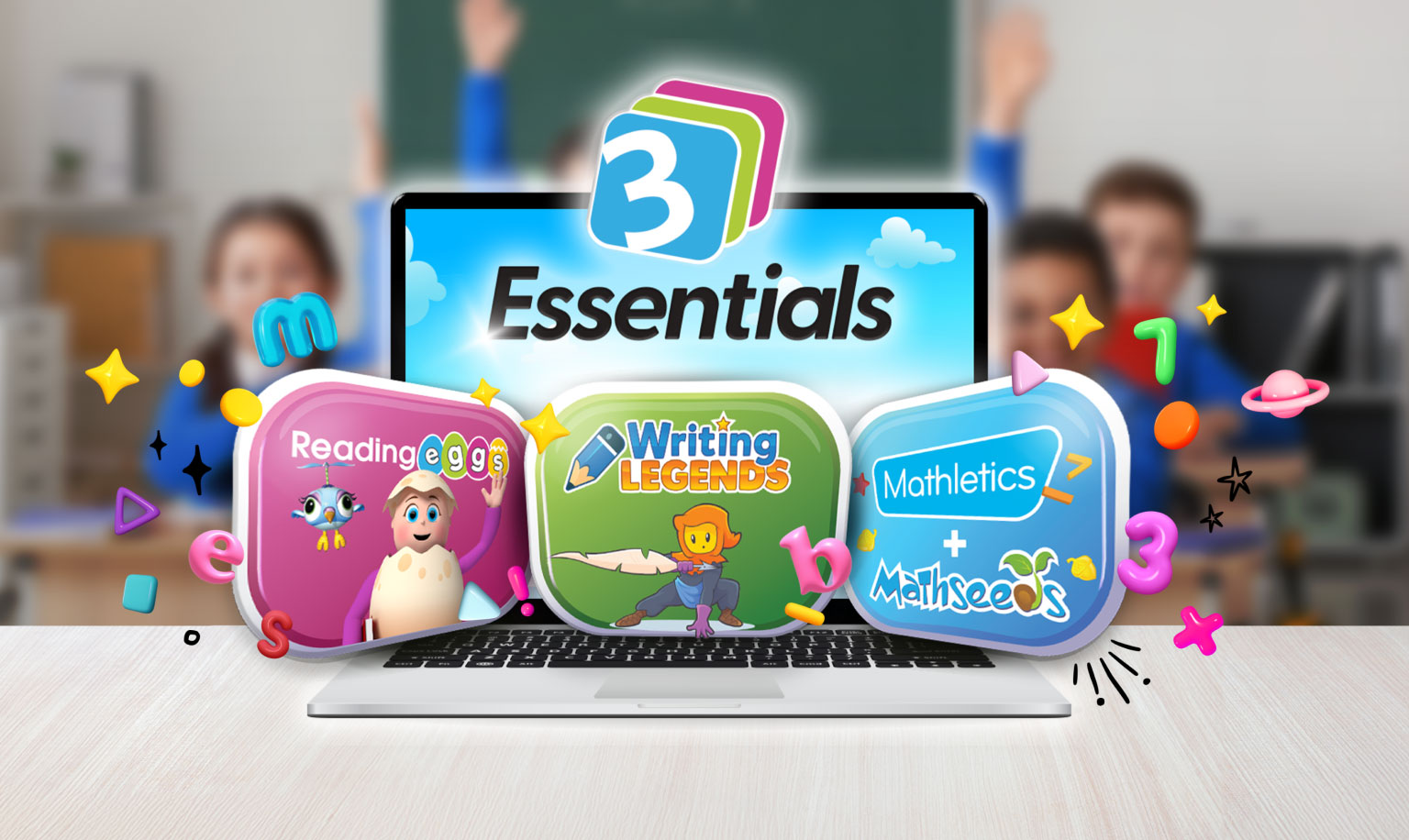
In summary: Mathematical fluency skills help students think faster and more clearly, giving them the energy, attention and focus to tackle complex problem-solving and reasoning questions.
The future needs problem-solvers with reasoning skills. But as education shifts its focus to the critical and creative angle of mathematics problems, we can’t lose sight of the abilities and skills that make this thinking possible: mathematical fluency.
We’ve covered mathematical fluency in another article (What is mathematical fluency?), but here’s the TL;DR version:
Mathematical fluency is the ability to quickly and accurately recall mathematical facts and concepts. It’s made up of 5 key parts – accuracy, flexibility and appropriate response, efficiency, automaticity, and number sense.
Fluency builds the foundations students use to tackle more complex, multi-step questions in problem-solving and reasoning activities, and it’s crucial to their success. Here’s why:
Mathematical fluency saves energy
Students have only so much energy. You’ll have noticed this before and after lunch breaks. The same principles apply when it comes to problem-solving and reasoning activities.
Let’s say your PSR activity has five steps, and each one of them has four or five problems to solve. The more energy students spend on figuring out those smaller questions, the less they’ll have when it comes to critically and creatively tackling the whole question.
Further, when students aren’t succeeding at one part of a larger problem, it can make the entire activity seem like an overwhelming exercise.
If we’re to look at a student’s brain, those with high fluency skills would have efficient neural pathways, meaning there’s less energy spent and less time is taken for the question to be received and for the answer to be found.
The good news is that these neural pathways are strengthened with repeated exercise, like with any learned behaviour.
By getting students to practice fluency, you’re strengthening the mind muscles they need to do heavier lifting and for longer.
Fluency saves time
Hand-in-hand with saving energy, fluency saves time for students, and this has two distinct benefits: it helps students stay focused on the logical progression of problems and perform better on tests.
Focus – In a multi-step problem that asks students to use several approaches (like a mix of geometry, algebra, fractions and so on), being able to recall or solve the minutiae with little or no effort keeps them from losing focus on their logical progression.
It’s like being on a hike where you’re expected to find your food and water, camp, and mountain climb – if you’re stuck focusing on each step and breathing in and out, you probably won’t feel much like setting up a tent or getting your ropes and climbing gear in order.
Better test-taking – Tests have time limits and they’re stressful. Fluency alleviates these pressures; first, by enabling students to attempt to complete more questions, and by getting around the roadblocks of basic computations (like counting on fingers, writing down, working out or reaching for the calculator).
Math fluency builds confidence and reduces mathematics anxiety
Motivation, engagement and progress all rely on students’ confidence that they can complete tasks. For students with mathematics anxiety (the feeling of being overwhelmed or paralysed by mathematics), this is especially important.
Strong fluency allows students to work and see success independently, growing their sense of autonomy and confidence, and helping them see whole problems as small, achievable steps.
It’s like any kind of sporting competition or arts performance; the drilled basics allow the athlete or artist to work on more complicated movements and strategies and prepares them mentally for big events.
In this case, our events are tests, problem-solving, or being introduced to new concepts and material.
Early mathematical fluency is an indicator of later success
Students who have better fluency in their early education are likely to perform better as they enter secondary school. But it goes further than that – mathematically fluent early learners see significant gains in their mathematics achievements later on.
We can make educated guesses for why this is – the pace of education and the progressive complexity of mathematics means that those who don’t develop strong fluency early will have a harder time keeping up.
This is especially true when it comes to problem-solving and reasoning.
Preparing students early with fact fluency gives them the tools they need to take on the harder problems they’ll inevitably face in their secondary schooling. If we don’t, it’s like throwing an entry-level karate student into the ring with a black belt master – they won’t have the strategy, reflex or thinking to take them on.
Mathematical fluency prepares students for the problem-solving future
It’s hard to imagine what the future careers of our students will look like. But judging by the push into an automatic world, we can almost guarantee they’ll need three key things to be successful:
- The ability to understand and manipulate data
- Critical thinking skills that will allow them to act strategically and tactically
- Creative thinking skills that enable them to approach problems in a variety of ways
How to reinforce your students’ mathematical fluency
We recommend three things:
Playing mathematics games
Practice requires repetition, and repetition is fun when it’s gamified. But games have a few further benefits:
- They encourage thinking about mathematics on a strategic level
- They need less teacher input and encourage autonomous learning
- They build students computational fluency
- They connect the classroom environment to the home learning environment
Daily mathematics fluency activities
Mathematics skills become strong when they’re done regularly. After a concept has been introduced, you should look to have activities planned to cement students’ knowledge until you’re confident they can work on it or use it independently.
Give students time to discover
Plan lessons that allow students time to discover number patterns, structures, and concepts and test them out in different situations to see if what they discovered works. This builds autonomy and gives students the chance to reflect on their learning.











